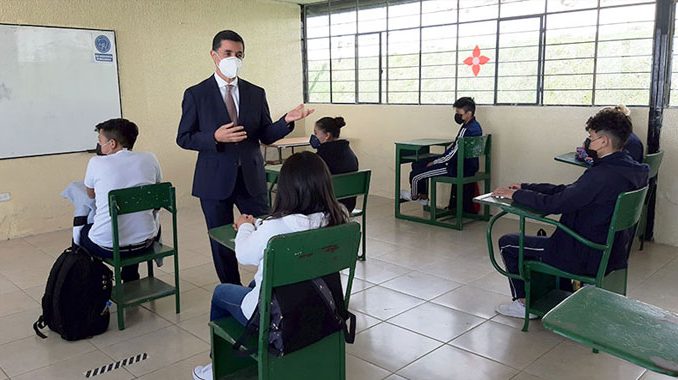
In Ecuador, at least 53% of the educational establishments would not be in suitable conditions of their sanitation and hygiene areas to receive the students.
Of the 3,297,505 students enrolled in tax education in the country for the 2021-2021 school year, 135,455 left the private educational units of the initial, general basic and high school levels.
The reason is that the economic situation of many families changed due to the pandemic, but the State’s resources are not enough to serve the student population.
The Ministry of Education predicted that at least 100,000 new students would join the public education system for the 2020-2021 cycle, most of them from private institutions. However, 181,699 students made their transfer to the public schools.
In this school period, most of the transfers were made in Guayas with 47,490; Pichincha added 18,340; and Esmeraldas 12,552.
Public educational institutions will receive a greater number of students until January 2022, which will cause additional pressure on the system, according to the Minister of Education, María Brown, who added that it is a phenomenon that, although it has increased with the pandemic, is not new.
For the president of the National Union of Educators (UNE), Isabel Vargas, the migration of students due to the pandemic would amount to about 300,000. A situation that for the leader would also cause overcrowding due to the lack of investment in education.
An analysis carried out by the UNE to the budget proforma for 2022 indicates that there is a decrease of USD 955 million in relation to what had to be projected.
Vargas said that the Organic Law of Finance Planning is not taken into account in relation to the Gross Domestic Product (GDP).
She stated that this Government is the one that has contributed the least with 3.11% of GDP, in relation to the last five years, when now more resources are required not only because of the migration of students from other institutions, but because they would also be returning 560,000 students to the classrooms.
She commented that 3.4 billion was budgeted for initial, basic and high school education and that it should have been USD 4.3 billion.
Within the National Assembly, legislators considered that the proforma does not guarantee the necessary funds.
The Education Commission rejected the lowering of the budget for this area on November 17.
The Ministry of Economy and Finance has maintained that for fiscal year 2022 the GDP has been estimated at USD 109,618.57 million, with 0.5% of this being USD 548 million. Hence, the budget for initial, basic and high school education amounts to USD 554.73 million, an item that would already reflect an increase in accordance with current legal regulations.
However, the president of the Commission, Manuel Medina, explained that the budget for education should be increasing by 0.5% of GDP every year until reaching 6%. Something that would not happen at the moment.
While the Minister of Education pointed out that at least USD 600 million would be required to improve the school infrastructure in the country.

Be the first to comment